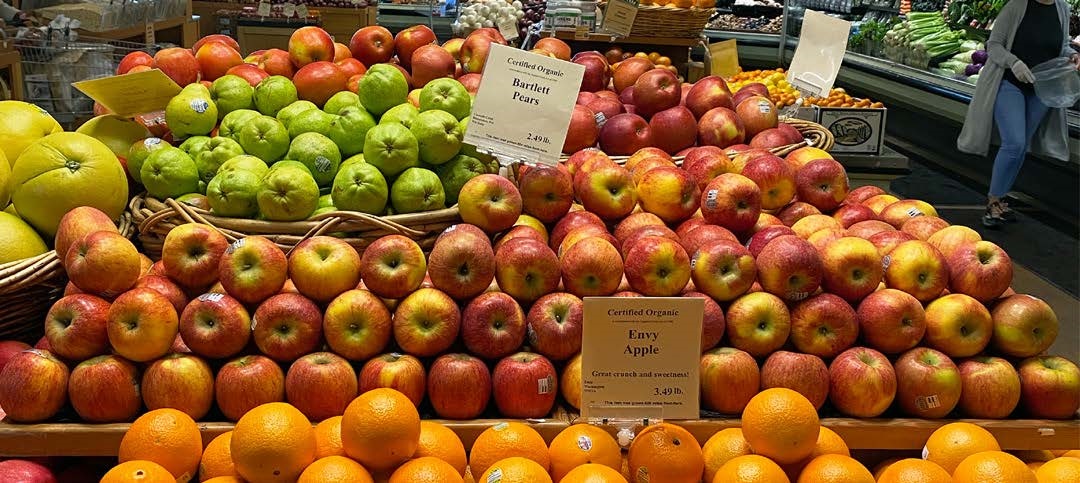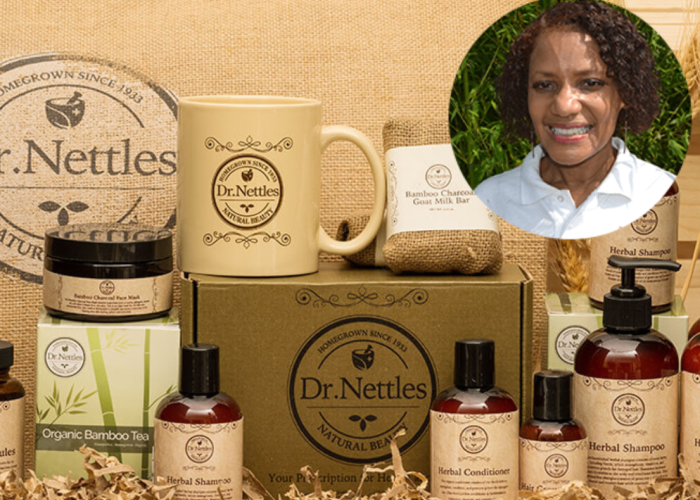Here’s an example of protecting organic integrity in the organic produce section:
 Organic Control Point #1: The produce department displays organic apples and non-organic apples side by side. The customer can easily pick up a non-organic apple and put it back down in the organic apple display. This presents a commingling problem which is prohibited. Because both types of apples are in direct contact with each other, there is a second area of non-compliance, i.e., the potential for surface residue of prohibited materials from the non-organic apples contacting organic apples.
Organic Control Point #1: The produce department displays organic apples and non-organic apples side by side. The customer can easily pick up a non-organic apple and put it back down in the organic apple display. This presents a commingling problem which is prohibited. Because both types of apples are in direct contact with each other, there is a second area of non-compliance, i.e., the potential for surface residue of prohibited materials from the non-organic apples contacting organic apples.
Step 1: Assemble the organic control point team: Produce manager and employees.
Step 2: Identify organic control point: Organic and non-organic apples touching each other in a display shelf.
Step 3: Critical limit for organic control point is zero. No commingling or contact is allowed.
Step 4: Establish protective action: Develop protocols that ensure organic and non-organic produce do not touch. Incorporate protocols into employee training. Post protocols in the produce department and keep a copy in the Organic System Plan binder.
Step 5: Establish corrective action: Separate apples and re-display properly. Never set organic produce below non-organic, especially where water and misters are in use. If organic apples cannot be clearly identified by the employee when separating the display, any suspect apples should be displayed with the non-organic apples and sold as non-organic.
Step 6: Implement records to document organic control points: Use a written checklist to verify periodic visual walk through of produce department to ensure that organic apples are displayed properly. A document may be needed to record problems and solutions.
Step 7: Monitor effectiveness: A monthly visual inspection of the department for each organic control point is conducted by the manager. The Produce Department organic control point Checklist may be used to verify this inspection.
Here’s an example of protocols in the produce department to maintain organic integrity using organic control points:
1.a. The retail store has completely different display areas for organic and non-organic produce. Organic produce is always displayed in Sections A and B. Non-organic produce is always displayed in Sections C and D. Consider creating signage that clearly distinguishes organic from non-organic, such as a color-coding system that is consistently used throughout the store.
1.b. The retail store does not have totally separate display areas for organic and non-organic. Similar commodities, such as tree fruits or citrus, are stored in proximity but not side by side on the same display shelf. Always display organic produce in completely separate areas on the display shelf. Because apples are loose items, organic apples and non-organic apples should not be displayed in the same area of the display shelf.
2. Retailers need to incorporate this information into the store’s existing employee training program.
Here are some key examples of organic control points where contamination can occur:
- Receiving
- Cleaning and Sanitizing
- Pest control
- Storage
- Packaging
- Labeling
Clearly written and posted protocols will help ensure all prevention measures are maintained.










